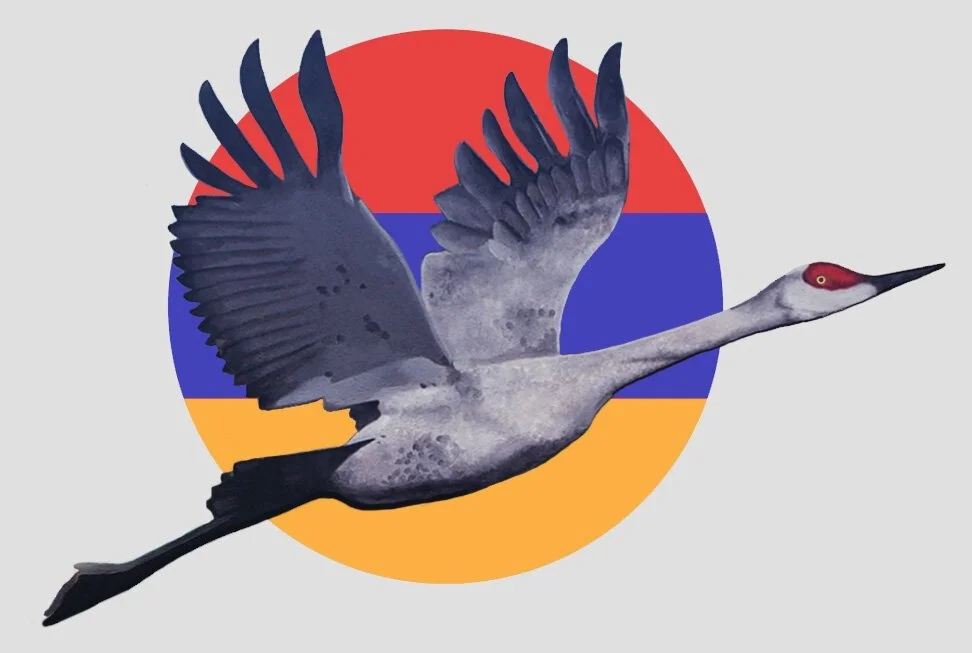Grid transfer from layout to wall
Sample of modern Armenian notation
Akdamar island church Lake Van
Special thanks to the City of Glendale:
Ani Garibayan, Corryn Cummins & Areni Agbabian
In appreciation to the members of the Glendale Design Review Board:
Caro Minas, Art Simonyan, Francesca Smith & Christopher Welch
Color study in progress - August 2020
Elevation layout submitted to the City of Glendale Design Review Board
Martiros Saryan (1880-1972), Mountain Landscape, 1924
From A Field Guide to Birds of Armenia
Concept sketch - June 2020
Second draft - July 2020
The drawing was transferred to the wall freehand. A 2x2 foot grid was used to retain design proportion. The black rectangles denote windows that were to be installed later in the building’s renovation.
Unanimous approval was granted by the Glendale Design Review Board on October 8, 2020. Painting began in December and completed in mid-January 2021.
Artist Nicholas Freeman
Tower of Tsitsernakaberd - Photo credit: Dudva
Painting assistance from C Squared
On 24 April 2015, the hundredth anniversary of the commencement of the Armenian Genocide, Armenians around the world collectively mourned for and remembered their ancestors who had lost their lives in the massacres and deportations of 1915.1 These commemorations took place in many forms, including marches, candlelight vigils, ceremonial speeches and cultural performances. The worldwide permanence of these events, and the international media coverage it procured, is in large part attributed to the transnational Armenian diasporic community; a community that was drastically remodelled by the early twentieth century, Young Turk promulgated deportations and killings of an estimated 800,000 to 1.5 million Ottoman Armenians. However, despite the century-long passage since the Genocide, denial still permeates in official Turkish rhetoric while the majority of the world’s nations officially do not recognize the great catastrophe of the Ottoman Armenians as ‘genocide’. Thus, memorialization practices in worldwide Armenian communities often coincide with calls for international recognition. This combination of memorialization strategies with recognition endeavours precipitates a critical analysis of the socio-political impact Armenian Genocide commemorations have on a global Armenian community.
From the introduction of an essay by Sabrina Papazian. Read the full text here.
Papazian, Sabrina. (2019). The Cost of Memorializing: Analyzing Armenian Genocide Memorials and Commemorations in the Republic of Armenia and in the Diaspora. International Journal for History, Culture and Modernity. 7. 10.18352/hcm.534.
Second deck view
The Armenian Genocide Memorial Complex - Architect Arthur Tarkhanyan

















